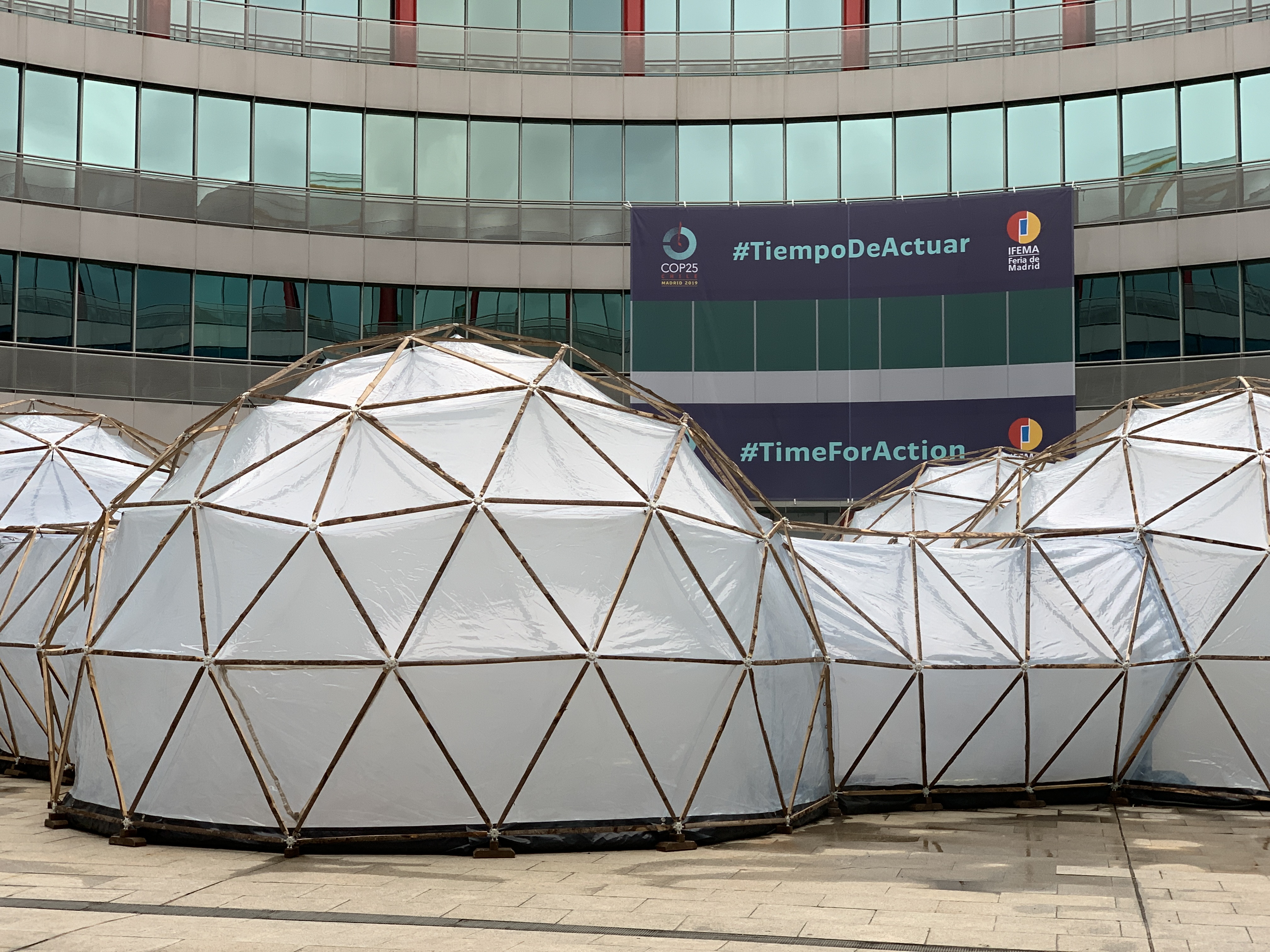Most days of COP, I have stayed in the “Blue Zone, ” which is the area of COP for accredited delegates and where plenary sessions and the vast majority of official side-events are held here. Next door is the “Green Zone,” which also has various exhibits and is open to the public.

One art exhibit in the Green Zone I had looked forward to (and FINALLY got around to) seeing was the “Pollution Pods.” The installation, by artist Dr. Michael Pinsky, uses fog machines and perfumes to imitate the smog of 5 cities around the world: Beijing, Sao Paolo, New Delhi, and London.

According to the World Health Organization (WHO), “Air pollution and climate change are two sides of the same coin: both are largely caused by the same sources and have similar solutions. Ambitious climate action has the potential to both safeguard our health and future, and to reduce the yearly seven million premature deaths from air pollution.”
Walking from one pod/“city” to the next really showed how stark the contrast was. Entering “Beijing” and “New Delhi,” it suddenly looked hazy in a very noticeable manner. Fortunately, the fake smog in the pod is non-hazardous. Still, it’s so sad to begin thinking about how millions around the world are literally being smothered by the toxic fumes due to the burning of fossil fuels (I’ll blog later about my thoughts on climate change/social justice).
The only upside of this situation is that the health impacts of air pollution are convincing citizens and governments in affected areas that climate action must be taken NOW. Protests in mainland China are rare, but people still took the risk to protest against insufficient air pollution measures because they are so fed up with the detrimental impacts of smog. When a problem affects a large swathe of a population, such discontent no doubt raises concerns in a country like China that values social stability. China’s progress on climate change clearly indicates its government’s long-term planning and foresight about the necessity of climate action. I found the experience of the Pollution Pods to be an effective way of connecting the dots between the climate and health nexus.
As some food (or shall I say “air”) for thought, I’ll end today’s post with an excerpt from the Pods’ creator, Dr. Pinsky about his installation:
“Five geodesic domes are connected to form a ring. Within each dome the air quality of five global cities is recreated. A carefully mixed recipe emulates the relative presence of ozone, particulate matter, nitrogen dioxide, sulphur dioxide and carbon monoxide which pollute these cities. Starting from the hosting city, the visitor will pass through increasingly polluted cells, from dry and cold locations to hot and humid.
The release of toxic gases from domestic and industrial sources both increase the rate of global warming and have a direct effect on our present day health. In the West, in cities such as London, one in five children suffer from asthma. Whilst in the developing countries such as Delhi, over half the children have stunted lung development and will never completely recover. However, this pollution is difficult to understand through images, as the smog of such as Delhi seems almost romantic and much of the most dangerous toxins are not visible at all.
Much of this pollution is driven by the insatiable appetite of capitalist consumerism. Whilst we here in the developed world live in an environment with relatively clean air, people in countries such as China and India are being poisoned by the air borne toxins created from industries fulfilling orders from the West.
The experience of walking through the pollution pods demonstrates that these worlds are interconnected and interdependent. Our need for ever cheaper goods is reflected in the ill-health of many people in world and in the ill-health of our planet as a whole.”